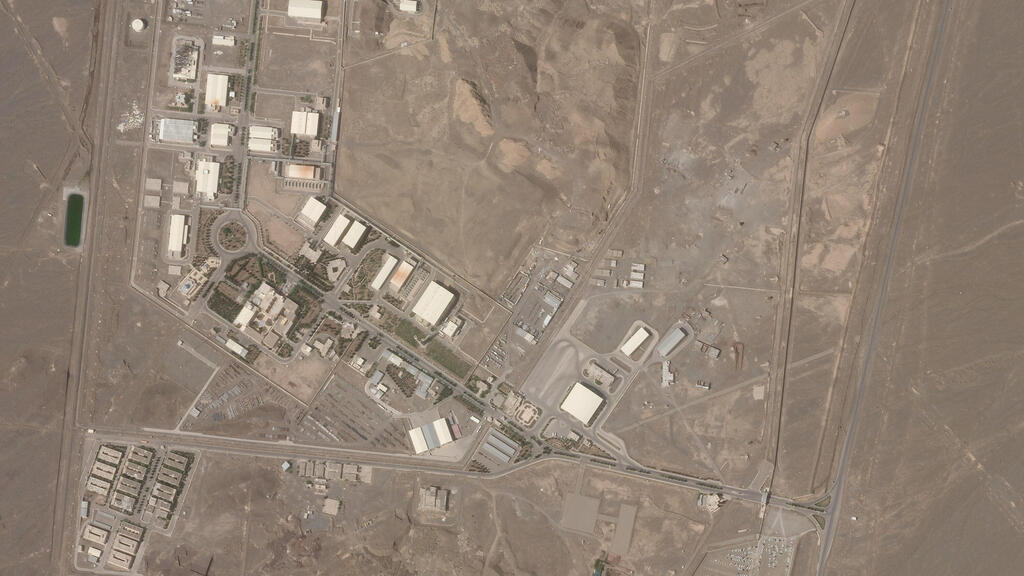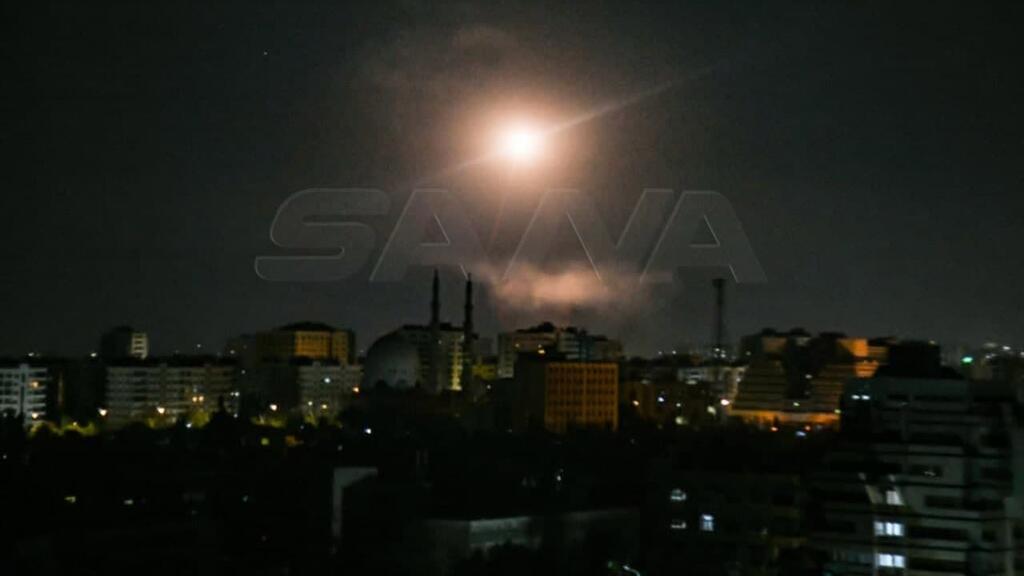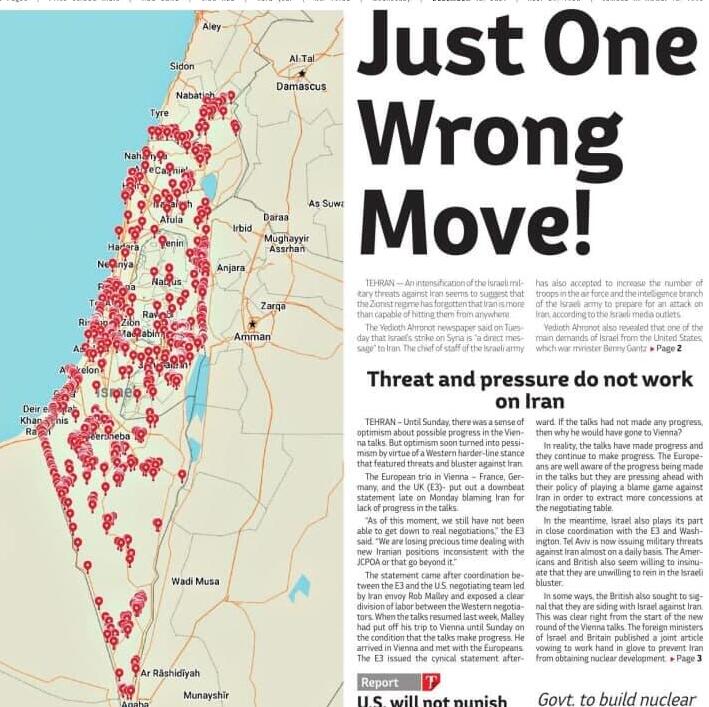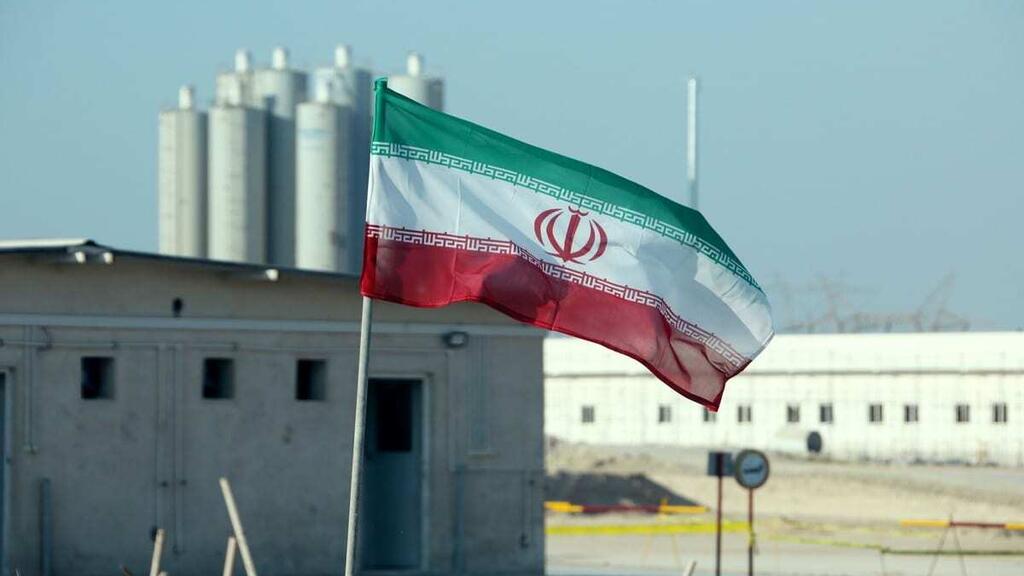“Just one wrong move!” — that was the Tehran Times’ Wednesday headline, which was accompanied by a map of Israel dotted with markers, each symbolizing a potential target.
This article — as amateurish as it may seem — is a part of the ongoing psychological warfare campaign being waged between the two countries, and is in fact meant to serve as a direct threat to Israel following Jerusalem’s own series of threats regarding a potential independent attack on Iran.
Proof of that can be found in the article’s very first paragraph: “An intensification of the Israeli military threats against Iran seems to suggest that the Zionist regime has forgotten that Iran is more than capable of hitting them from anywhere.”
The article also quotes Ynet and its sister publication Yedioth Ahronoth as saying that Israel’s attack on a chemical storage facility in Syria six months ago is “a direct message” to Iran.
The article further cited that the Pentagon recently rejected Israel's request to expedite delivery of two KC-46 refueling jets, which are set to play a vital role in the potential 1,000 km journey from Israel to Iran.
It seems that the Iranians are particularly interested in what is happening in Israel and are therefore trying to correspond with publications both in Israel and abroad.
4 View gallery


Satellite picture showing the Natanz nuclear facility in Iran
(Photo: Planet Labs Inc)
This merely marks Tehran’s retort to The Washington Post’s recent article which revealed Israel’s recent attack in Syria — which itself was meant to show the Islamic Republic that Israel is working with precise and reliable intelligence and that it is, in fact, dead serious regarding the prospect of a future attack on any of Iran’s nuclear facilities.
And yet, all those who deal with the issue understand that the two cases are incomparable.
An attack in Syria, where the Israeli Air Force sometimes operates relatively freely, is not an attack on Iran, which lies 1,000 km away from Israel and boasts robust air defense capabilities.
Despite the high stakes, Iran's latest move was extremely low effort.
The map accompanying the article shows a variety of “targets”, some in the West Bank, including Nablus and Jenin, as well as along the border with Egypt, and generally cover almost every point in Israel — a highly unlikely scenario.
And yet, it seems that the map and the article did manage to generate some panic among the Israeli public, the majority of which lack the knowledge to dive into the details of Iran’s actual capabilities.
These publications and articles won’t stop any time soon though, quite the opposite in fact.
4 View gallery


Archive: Syrian air defense systems activated against alleged Israeli missiles, August 19, 2021
As tensions between the two sides continue to mount, we will see more and more use of psychological warfare, which has proven to be a powerful tool in today’s day and age.
Maybe the government should prepare the Israeli public for the inevitable continuance of the psychological campaign against Iran in order to remind them to keep things in proportion.



